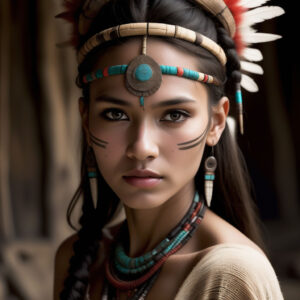Preserving Heritage: A Deep Dive into the Culture and Traditions of the Gond and Gowari Tribes
Introduction:
The rich tapestry of India’s cultural heritage is woven with threads of diversity, and at its heart lie the indigenous tribes that have inhabited its lands for centuries. Among these vibrant communities are the Gond and Gowari tribes, whose histories, traditions, and way of life offer a window into a world that is both ancient and ever-evolving. In this article, we embark on a journey to explore the unique characteristics, customs, and challenges faced by the Gond and Gowari tribes, shedding light on their enduring legacy in the modern age.
Origins and Distribution:
The Gond and Gowari tribes trace their origins back to the central regions of India, primarily in the states of Madhya Pradesh, Maharashtra, Chhattisgarh, and parts of Odisha, Andhra Pradesh, and Telangana. Belonging to the Dravidian ethnic group, these tribes have a distinct cultural identity that sets them apart from the mainstream society.
The Gond people, also known as the Gondi or Koitur, have a rich history that predates recorded time. They have been traditionally associated with the Gondwana region, from which they derive their name. The Gondi language, a member of the Dravidian language family, serves as a unifying force among Gond communities spread across different states.
The Gowari tribe, on the other hand, is predominantly found in Maharashtra, particularly in the Vidarbha region. They are known for their close-knit communities and adherence to traditional practices that have been passed down through generations. The Gowari people have historically been involved in agriculture, animal husbandry, and various forms of craftsmanship, contributing to the cultural and economic landscape of the region.
Culture and Traditions:
Central to the identity of both the Gond and Gowari tribes is their rich cultural heritage, which finds expression in various forms of art, music, dance, and rituals. The Gond people are renowned for their distinctive art style, characterized by intricate patterns, vibrant colors, and motifs inspired by nature and mythology. Gond artists often depict scenes from folklore, legends, and daily life on canvas, creating visually stunning works that captivate audiences around the world.
Similarly, the Gowari tribe has a strong tradition of folk music and dance, which play an integral role in their social and religious ceremonies. The rhythmic beats of traditional instruments like the dholak and tarpa accompany lively dance performances, reflecting the joyous spirit and communal bonds of the Gowari people. These cultural practices serve not only as forms of entertainment but also as means of preserving ancestral knowledge and fostering a sense of collective identity.
One of the most striking aspects of Gond and Gowari culture is their reverence for nature and the spiritual beliefs intertwined with it. Both tribes have a deep connection to the land, viewing forests, rivers, and mountains as sacred spaces imbued with divine energy. Rituals and festivals honoring nature deities are an integral part of their religious calendar, reinforcing the importance of harmony and balance in the natural world.
Challenges and Resilience:
Despite their rich cultural heritage, the Gond and Gowari tribes face numerous challenges that threaten their way of life and cultural survival. Encroachment on their ancestral lands, environmental degradation, and lack of access to basic amenities pose significant obstacles to their socio-economic development. Additionally, the forces of globalization and modernization exert pressure on traditional livelihoods and cultural practices, leading to concerns about cultural erosion and identity loss.
In recent years, efforts have been made to address these challenges and empower tribal communities to preserve their cultural heritage and improve their living conditions. Government initiatives aimed at promoting tribal welfare, education, and sustainable development have had some positive impact, but more comprehensive strategies are needed to address the root causes of marginalization and inequality.
Community-led initiatives and grassroots organizations have also played a crucial role in supporting the Gond and Gowari tribes, advocating for their rights, and promoting cultural revival. Through initiatives such as cultural festivals, artisan cooperatives, and eco-tourism ventures, tribal communities are reclaiming agency over their destinies and asserting their rightful place in the diverse tapestry of Indian society.
Conclusion:
In conclusion, the Gond and Gowari tribes represent living embodiments of India’s rich cultural diversity and indigenous heritage. Their resilience in the face of adversity, profound connection to the natural world, and vibrant cultural expressions serve as a testament to the enduring spirit of tribal communities across the country. As India marches forward into the 21st century, it is imperative that we recognize, celebrate, and safeguard the cultural legacies of the Gond and Gowari tribes, ensuring that their voices continue to resonate for generations to come.